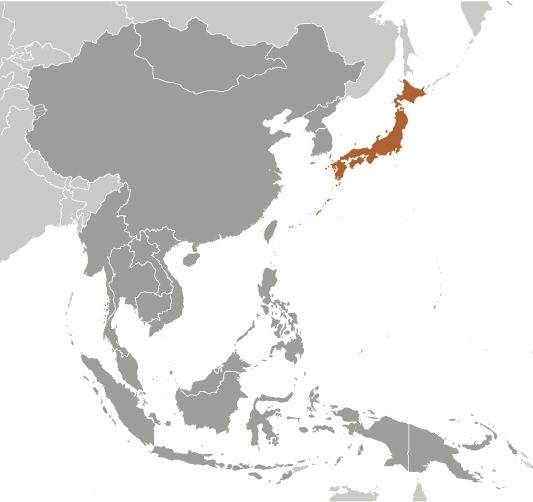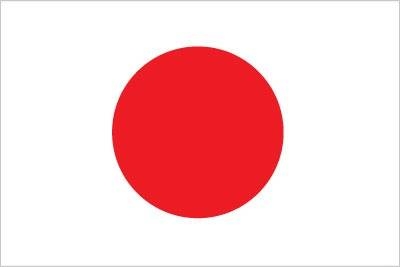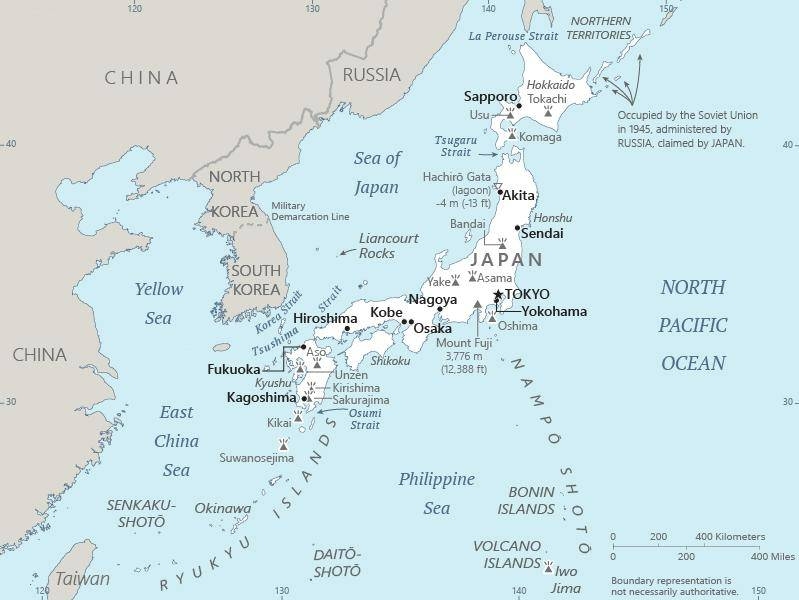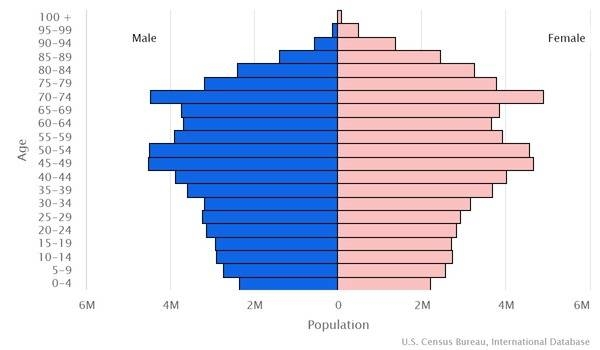Country Summary




Introduction
Background
Japan opened its ports in 1854 and began to intensively modernize and industrialize. During the late 19th and early 20th centuries, Japan became a regional power. After its defeat in World War II, Japan recovered to become an economic power and an ally of the US. While the emperor retains his throne as a symbol of national unity, elected politicians hold actual decision-making power.
Geography
Area
total: 377,915 sq km
land: 364,485 sq km
water: 13,430 sq km
Climate
varies from tropical in south to cool temperate in north
Natural resources
negligible mineral resources, fish; note - with virtually no natural energy resources, Japan is the world's largest importer of coal and liquefied natural gas, as well as the second largest importer of oil
People and Society
Population
124,214,766 (2022 est.)
Ethnic groups
Japanese 97.9%, Chinese 0.6%, Korean 0.4%, other 1.1% (includes Vietnamese, Filipino, and Brazilian) (2017 est.)
Languages
Japanese
Religions
Shintoism 70.5%, Buddhism 67.2%, Christianity 1.5%, other 5.9% (2019 est.)
Population growth rate
-0.39% (2022 est.)
Government
Government type
parliamentary constitutional monarchy
Capital
name: Tokyo
Executive branch
chief of state: Emperor NARUHITO (since 1 May 2019); note - succeeds his father who abdicated on 30 April 2019
head of government: Prime Minister Fumio KISHIDA (since 4 October 2021 )
Legislative branch
description: bicameral Diet or Kokkai consists of:
House of Councillors or Sangi-in (245 seats, currently 242; 146 members directly elected in multi-seat districts by simple majority vote and 96 directly elected in a single national constituency by proportional representation vote; members serve 6-year terms with half the membership renewed every 3 years); note - the number of seats increases to 248 at the July 2022 election for renewal of half the membership
House of Representatives or Shugi-in (465 seats; 289 members directly elected in single-seat districts by simple majority vote and 176 directly elected in multi-seat districts by party-list proportional representation vote; members serve 4-year terms)
Economy
Economic overview
third-largest, trade-oriented, and diversified economy; most indebted country; recent infrastructure spending, significant currency devaluations, consumption tax hikes; declining labor force; recent government stimulus largely offset COVID-19 downturn
Real GDP (purchasing power parity)
$5,224,850,000,000 (2019 est.)
Real GDP per capita
$41,400 (2019 est.)
Agricultural products
rice, milk, sugar beet, vegetables, eggs, poultry, potatoes, cabbages, onions, pork
Industries
among world's largest and most technologically advanced producers of motor vehicles, electronic equipment, machine tools, steel and nonferrous metals, ships, chemicals, textiles, processed foods
Exports
$793.32 billion (2020 est.)
Exports - partners
United States 19%, China 18%, South Korea 6%, Taiwan 6% (2019)
Exports - commodities
cars and vehicle parts, integrated circuits, personal appliances, ships (2019)
Imports
$799.52 billion (2020 est.)
Imports - partners
China 23%, United States 11%, Australia 6% (2019)
Imports - commodities
crude petroleum, natural gas, coal, integrated circuits, broadcasting equipment (2019)
Exchange rates
yen (JPY) per US dollar -
Page last updated: Tuesday, May 31, 2022
